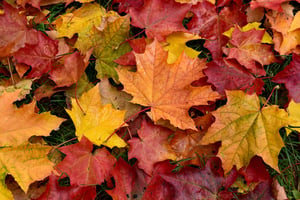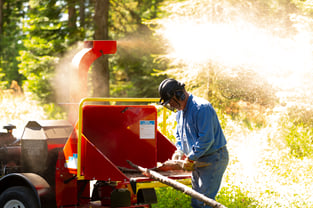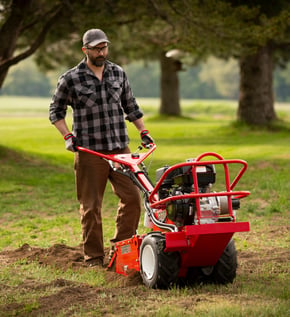Innovative Equipment Engineered to Last
Discover Barreto Manufacturing's 40 years of innovative, durable landscaping equipment, along with expert tips and local highlights for your projects.
Fall Cleanup & Winter Preparation
Fall is the season for cider, spice, and everything nice. While one of the coziest seasons, it is also the season for yard cleanup and preparation for the coming seasons. So, grab your favorite seasonal beverage and focus on these three areas to prepare for winter and make your spring projects a breeze.
Tree Care
Watching the leaves change to those fall colors we know and love signals the first sign of fall. This is also a sign to start preparing trees for winter. Trees go dormant in the winter, making it a great time to prune them. If you choose to chip the branches and mulch the leaves, you can put them to great use by spreading them at the base of your tree to help retain moisture and protect the root systems from severe temperatures. Enriching your soil with a slow release fertilizer in the fall will also help supply necessary nutrients throughout the winter, giving you happy, healthy trees in the spring!
Note: you may want to test your soil to ensure you don’t over-fertilize. For a simple understanding of your basic soil needs, there are many DIY soil tests available for purchase at a garden center near you. A more thorough option for understanding your soil needs involves sending your soil sample to a lab for a full nutrient analysis test. Your local extension service can assist with providing (free of cost) connections to these services. Here's a list of Cooperative Extension Services by state. Checkout this guide from the Oregon State University Extension Service outlining best practices for testing your soil.
Fall is also the best time to plant new trees as dormancy in the winter helps to prevent transplant shock. Planting in fall will also ensure your new trees avoid sun damage and drought.
Garden Preparation
We expect to do the bulk of our garden work in the spring, but putting in a little extra effort in the fall can take a lot of headache out of spring gardening. Fall is a great time to get some heavy weeding done. Removing problem weeds (that pesky morning glory for example), roots and all in the fall ensures they will not be able to establish over the winter, preventing them from overtaking your garden come spring.
Once you have harvested all of your crops, it is a good time to fertilize and till the soil. Deciding to till in the fall may or may not be ideal depending on your soil situation, but most agree that if you have especially hard or packed soil it's best to till deep in the fall to open and aerate the soil. This way in the spring you will only need a light turning and avoid the fight with the mud and muck.
Additionally, fertilizing before you till allows the fertilizer to begin enriching the soil, making it ready to nourish your plants come spring. If you need help choosing the appropriate fall fertilizer, check out this article on Fall Soil Improvements, Amendments, & Compost. Use this slow season to properly prepare and improve your soil, and by doing so your spring planting processes will be dramatically improved.
Yard Care and Winterization
 As we well know, falling leaves also means raking leaves. It is important to rake the leaves from your lawn regularly in the fall to prevent smothering and molds. It is also important to keep up on your usual lawn maintenance into the fall season (don’t slack on your watering!). Your lawn will continue to grow until the first frost and long grass in the winter is prone to snow mold, so keep mowing your lawn. For more information on snow mold, check out this article from Scotts: What Is Snow Mold on Grass. Fall is the best season for seeding, fertilizing, and preparing the grass for a healthy, luscious growing season in the spring!
As we well know, falling leaves also means raking leaves. It is important to rake the leaves from your lawn regularly in the fall to prevent smothering and molds. It is also important to keep up on your usual lawn maintenance into the fall season (don’t slack on your watering!). Your lawn will continue to grow until the first frost and long grass in the winter is prone to snow mold, so keep mowing your lawn. For more information on snow mold, check out this article from Scotts: What Is Snow Mold on Grass. Fall is the best season for seeding, fertilizing, and preparing the grass for a healthy, luscious growing season in the spring!
This post was originally published in November 2020 and has been refreshed and updated.


